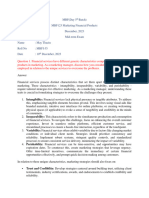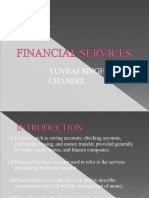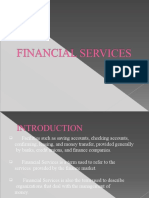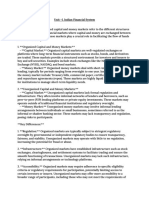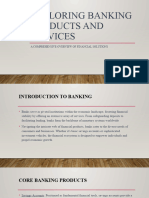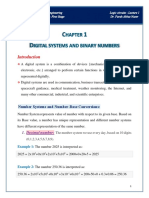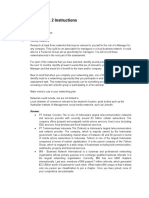0% found this document useful (0 votes)
4 views5 pagesMFS Assignment Answers June2025
The document discusses the structuring and differentiation of financial services and insurance offerings by banks, emphasizing the importance of client segmentation, regulatory compliance, and technological integration. It outlines intrinsic characteristics of financial services, strategies for differentiation, and the categorization of insurance products for various demographic segments. Additionally, it evaluates the financial services market landscape and highlights key factors for financial planning during the pre-retirement phase.
Uploaded by
Manish AgarwalCopyright
© © All Rights Reserved
We take content rights seriously. If you suspect this is your content, claim it here.
Available Formats
Download as PDF, TXT or read online on Scribd
0% found this document useful (0 votes)
4 views5 pagesMFS Assignment Answers June2025
The document discusses the structuring and differentiation of financial services and insurance offerings by banks, emphasizing the importance of client segmentation, regulatory compliance, and technological integration. It outlines intrinsic characteristics of financial services, strategies for differentiation, and the categorization of insurance products for various demographic segments. Additionally, it evaluates the financial services market landscape and highlights key factors for financial planning during the pre-retirement phase.
Uploaded by
Manish AgarwalCopyright
© © All Rights Reserved
We take content rights seriously. If you suspect this is your content, claim it here.
Available Formats
Download as PDF, TXT or read online on Scribd
/ 5
